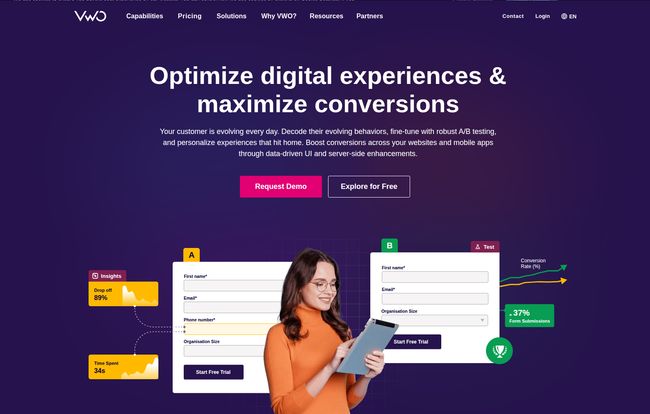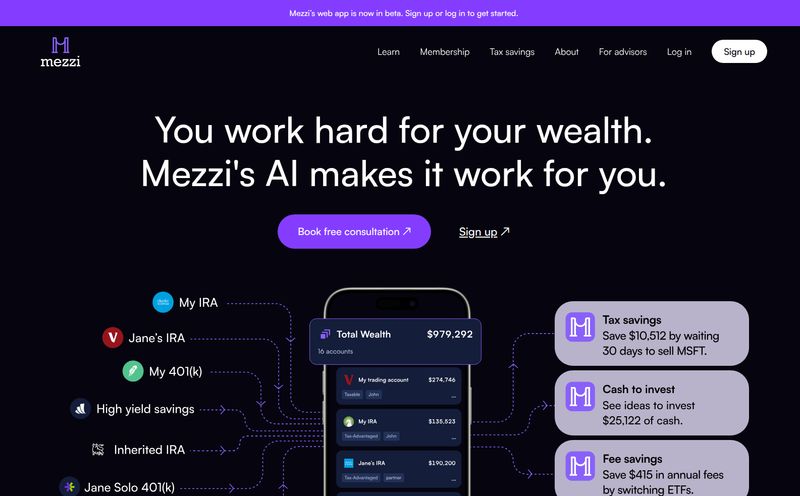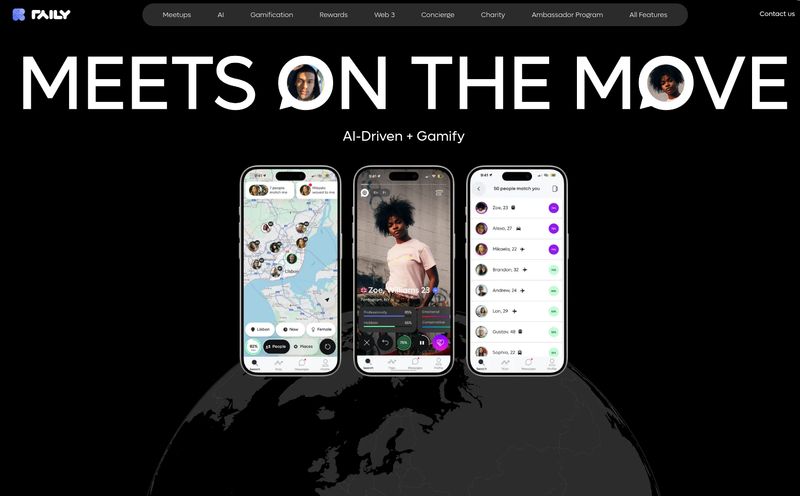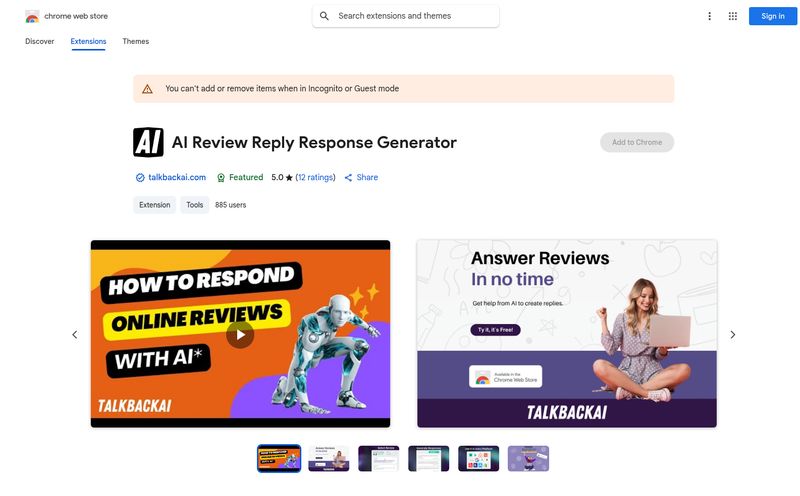For years, I've been in the trenches of SEO and conversion rate optimization (CRO). I’ve seen tools come and go, fads burn bright and fade, and I’ve celebrated a 0.5% conversion lift like it was a winning lottery ticket. We’ve all been there, right? Staring at our analytics, wondering why people are bouncing from a landing page we spent weeks perfecting. We make a change based on a hunch, cross our fingers, and hope for the best. It feels a bit like throwing darts in a dark room.
Ever since Google Optimize rode off into the sunset, there's been a gaping hole for a reliable, powerful, yet somewhat accessible testing platform. I've been getting a ton of questions about alternatives, and one name keeps popping up: VWO.
So, I decided to take a proper look, cut through the marketing fluff, and give you my honest take as someone who actually does this stuff for a living. Is VWO the answer to our collective CRO prayers? Let's get into it.
So, What Exactly is VWO, Anyway?
VWO, or Visual Website Optimizer, pitches itself as a “digital experience optimization platform.” That’s a fancy way of saying it’s a suite of tools designed to help you figure out what your website visitors actually want, and then give it to them. Think of it as a scientific lab for your website. Instead of guessing which headline works best, you can test two (or three, or four) versions simultaneously and let your users’ behavior tell you which one wins.

Visit VWO
It’s a platform built for experimentation. At its core, it’s about moving away from “I think this will work” to “I have data that proves this works.” For anyone serious about growing their business online, that shift is, frankly, everything. It’s the difference between a hobby and a business.
The Core Features That Actually Matter
A platform is only as good as its tools. VWO is packed with features, but let's focus on the ones that will likely form the backbone of your optimization strategy.
The Bread and Butter: A/B, Multivariate, and Split URL Testing
This is ground zero for CRO. VWO handles all the classic testing types with ease. A/B testing is your simple head-to-head matchup: does the red button get more clicks than the green one? Multivariate testing is for when you want to get more complex, testing multiple changes at once (like a new headline, a different image, AND a new button color) to see which combination performs best. And Split URL testing is perfect for bigger redesigns, letting you send traffic to two completely different page URLs to see which one converts better.
What I appreciate here is the flexibility. You can use their Visual Editor, which is surprisingly intuitive for non-coders to make simple changes, or you can jump into the Code Editor if you need more granular control. It caters to both the marketer who just wants to change some copy and the developer who needs to implement a more complex test.
Going Deeper with Personalization and Web Rollouts
Testing is great for finding the best version of a page, but what if the “best” version is different for different people? That's where personalization comes in. VWO lets you deliver unique experiences based on user data—things like their location, their past behavior on your site, or whether they’re a new or returning visitor. You could show a special offer to visitors from a specific city or display a different homepage banner to someone who has purchased before. It’s the next level of optimization.
The Secret Sauce: Behavior Analytics & AI
This is where things get really interesting for me. VWO isn’t just a testing tool; it’s an insights engine. With features that fall under behavior analytics (think heatmaps, session recordings, and form analysis), you can actually watch how users interact with your site. You can see where they click, how far they scroll, and where they get stuck. It’s like having a one-way mirror into your user's screen.
And then there’s the AI. VWO has woven artificial intelligence into the platform to help you spot opportunities faster. It can analyze your test results and even your website's data to suggest what you should test next. This can be a huge help in overcoming that “analysis paralysis” where you have tons of data but no clear next step.
My Honest Take: The Good, The Bad, and The Pricey
No tool is perfect. Let’s break down the real pros and cons based on my experience and what I'm hearing in the industry.
What I Genuinely Like About VWO
First off, the user interface is clean. Compared to some other platforms I've wrestled with (cough Adobe Target cough), it feels refreshingly straightforward. The comprehensive nature of the platform is another huge plus. Having testing, analytics, and personalization all under one roof prevents that frustrating scramble between three or four different tools. The support seems solid, and for bigger companies, the enterprise-grade security and compliance (GDPR, CCPA, HIPAA) are non-negotiable. They take that stuff seriously, which is a massive relief.
A Few Things to Keep in Mind
Now for the reality check. VWO is not cheap. It’s a professional-grade tool with a price tag to match. If you're a small blogger or a tiny startup just getting your feet wet, the cost might be a tough pill to swallow. There are cheaper alternatives out there, though arguably less powerful.
Also, while the basics are easy to pick up, setting up really complex, multi-layered tests can require some technical know-how. You or your team might need to get comfortable with their SDKs or API to unlock the platform's full potential. It's not a flaw, just a characteristic of a powerful tool—the more it can do, the more there is to learn.
Let's Talk Money: A Look at VWO's Pricing
Okay, the big question. How much does VWO cost? Their pricing is based on a metric they call Monthly Tracked Users (MTU), which is basically the number of unique visitors you want to include in your experiments each month.
They offer three main tiers for their VWO Testing product:
| Plan | Starting Price (Example: 50k MTU) | Best For |
|---|---|---|
| Growth | $438 / month (billed annually) | Growing businesses that need solid A/B and Split testing capabilities. |
| Pro | $1186 / month (billed annually) | Companies scaling their optimization program, needing multivariate testing and advanced integrations. |
| Enterprise | Custom Quote | Large organizations needing a full suite, advanced security, and dedicated support. |
The pricing scales up as your MTU count increases. The good thing is that you can start with one product, like VWO Testing, and add others like VWO Personalize or VWO Insights later on. It’s a modular approach, which I appreciate.
So, Who is VWO Really For?
After digging in, it's pretty clear who VWO's ideal customer is. It’s for the fast-growing company that has moved past guesswork and is ready to invest seriously in data-driven optimization. It’s for the marketing teams who need to prove ROI, the product managers trying to improve user flows, and the UX designers who want to validate their designs with real user data.
If you're a one-person shop on a shoestring budget, this might be overkill for you right now. But if you have a team and a budget to support a dedicated optimization program, VWO should absolutely be on your shortlist. It’s a powerful engine for growth, if you're ready to learn how to drive it.
Frequently Asked Questions about VWO
I get asked these all the time, so let's clear them up.
1. What the heck is an MTU (Monthly Tracked User)?
An MTU is a unique visitor that enters into a VWO experiment or campaign on your site within a month. If the same person visits multiple times or sees multiple tests, they are still only counted as one MTU for that month. It’s VWO’s way of billing based on usage.
2. Is VWO a good replacement for Google Optimize?
In a word, yes. But it's more of an upgrade. Google Optimize was a fantastic free tool for basic A/B testing. VWO does everything Optimize did and a whole lot more, with more advanced testing types, better analytics, personalization, and dedicated support. It’s a step up in both capability and price.
3. How hard is VWO to set up?
The basic setup is pretty simple. You add a single snippet of smart code to your website’s header, similar to how you’d install Google Analytics. From there, you can start creating simple tests with the visual editor almost imediately. More advanced features, like server-side testing, will require a developer.
4. Can I test on mobile apps, not just websites?
Yes, you can. VWO provides mobile app A/B testing through their SDKs, so you can optimize the user experience within your iOS and Android apps as well. This is a huge feature for any business with a significant mobile app presence.
5. What kind of support can I actually expect?
According to their site and user reviews, support is a strong point. All plans get 24/7 email and chat support. The higher-tier plans like Enterprise get you a dedicated account manager and specialized support, which is pretty standard for enterprise-level SaaS.
The Final Verdict
So, is VWO the right tool for you? If you’re serious about conversion optimization and have outgrown basic tools, my answer is a resounding yes. It’s a robust, well-designed platform that brings together all the critical components of a modern experimentation program under one roof.
The price tag means it’s an investment, for sure. But it’s an investment in making smarter decisions, understanding your customers on a deeper level, and ultimately, growing your business with data instead of hunches. And in my book, thats an investment well worth considering.



